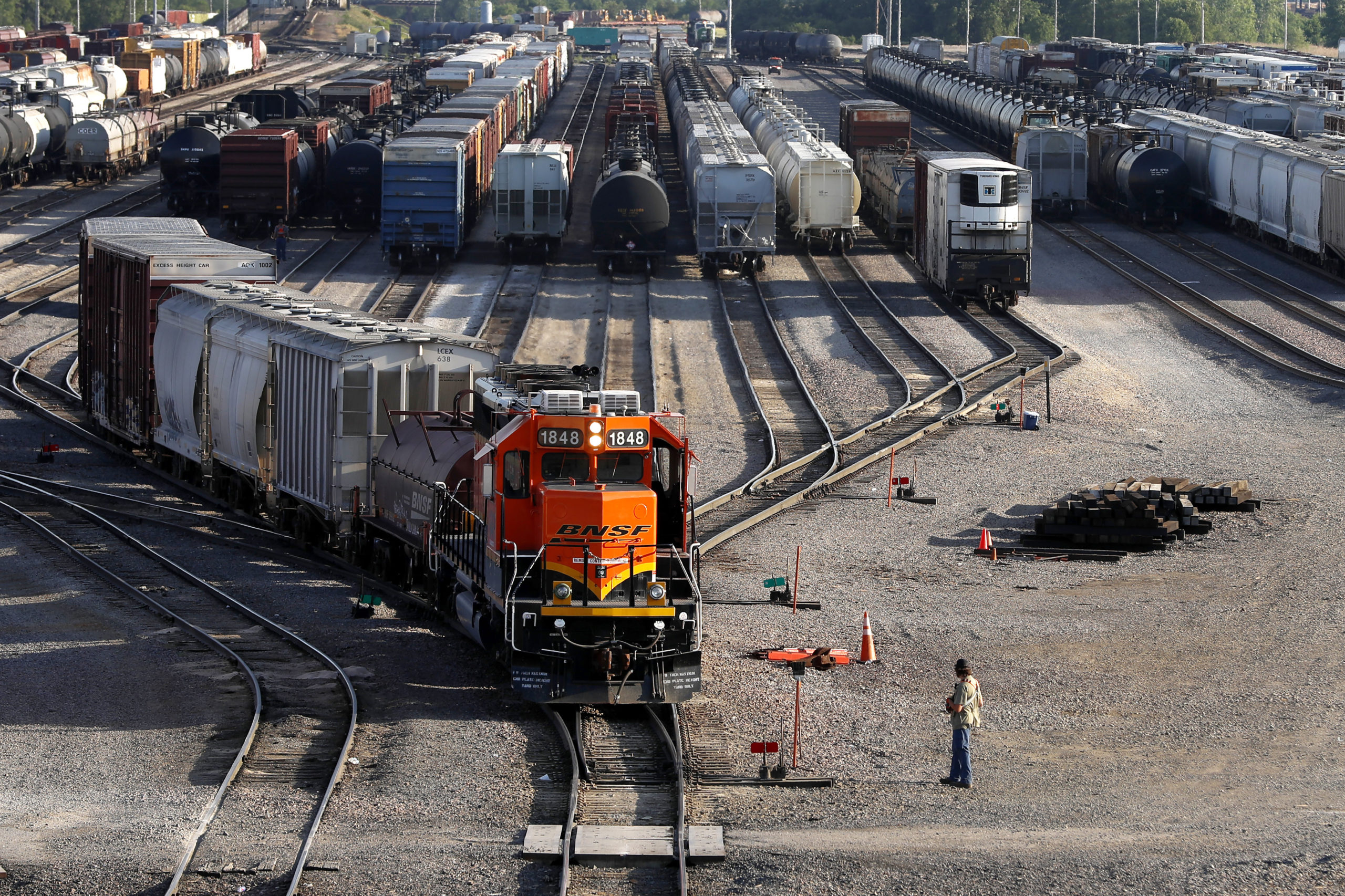OMAHA, Neb. (AP) — The major freight railroads signaled they’re ready to negotiate a new deal with their workers based on a presidential report that calls for 24% raises, but the 12 unions involved in the stalled talks covering 115,000 workers still haven’t commented on the recommendations.
The group that represents BNSF, Union Pacific, Norfolk Southern, CSX and other railroads in the talks said Wednesday said even though the report issued by the Presidential Emergency Board that Joe Biden appointed last month calls for higher raises than the companies had proposed they want to reach an agreement to avoid a strike.
“It is in the best interests of all stakeholders — including customers, employees, and the public — for the railroads and rail labor organizations to settle this dispute and prevent service disruptions,” said the National Carriers Conference Committee, which represents the railroads.
Both sides have 30 days to negotiate a new contract before federal law would allow a strike or lockout, but even if they can’t reach an agreement Congress is likely to intervene to prevent a strike that would disrupt the flow of goods across all sectors of the economy.
The unions were still reviewing the 124-page report Wednesday — one day after it was issued — and didn’t immediately comment on the details. But individual railroad workers commenting about the report on Twitter said it didn’t do enough to address their concerns about restrictive attendance policies that make it hard to take days off and demanding working conditions after thousands of jobs have been cut in recent years.
“It’s clear academic politically motivated labor mediators are out of touch with the reality of working conditions on the railroad today. They chose capital over the needs of workers and our nation,” Union Pacific engineer Ross Grooters said on Twitter. Grooters also serves on the city council in the Des Moines suburb of Pleasant Hill, Iowa.
Railroad workers expect a new contract to deliver significant raises to combat soaring inflation after they stayed on the job all throughout the pandemic, but many say they are tired of essentially being on call 24-7 and want working conditions to improve. The major freight railroads have eliminated nearly one-third of their employees — some 45,000 jobs — over the past six years as they overhauled their operations to run fewer, longer trains, so they say they need fewer locomotives and employees to handle all the freight.
In addition to the disagreements over wages and benefits, the unions have stridently opposed railroad proposals to cut train crews from two people down to one. A new proposed federal rule that would require two-person crews in most instances should make it harder to do that, but railroads continue to press for the change in the negotiations. The unions say its a safety issue, not just a jobs one.
The current contract talks have gone on for more than two years without an agreement and rail workers haven’t had a raise since 2019. The new report issued by a panel of arbitrators this week also calls for workers to receive five $1,000 bonuses in each year of the five-year deal, but it suggests that workers could take on a larger share of their health insurance costs, which would offset some of the raises.
But the railroads said the recommended wage increases and bonuses would result in average payouts of $11,000 to rail workers for back wages dating back to 2020. The suggested terms would also increase average rail worker pay to about $110,000 by the end of the five-year deal.
The head of the Association of American Railroads trade group, Ian Jefferies, said the recommended contract would deliver “the largest general wage increase in nearly 40 years.”

